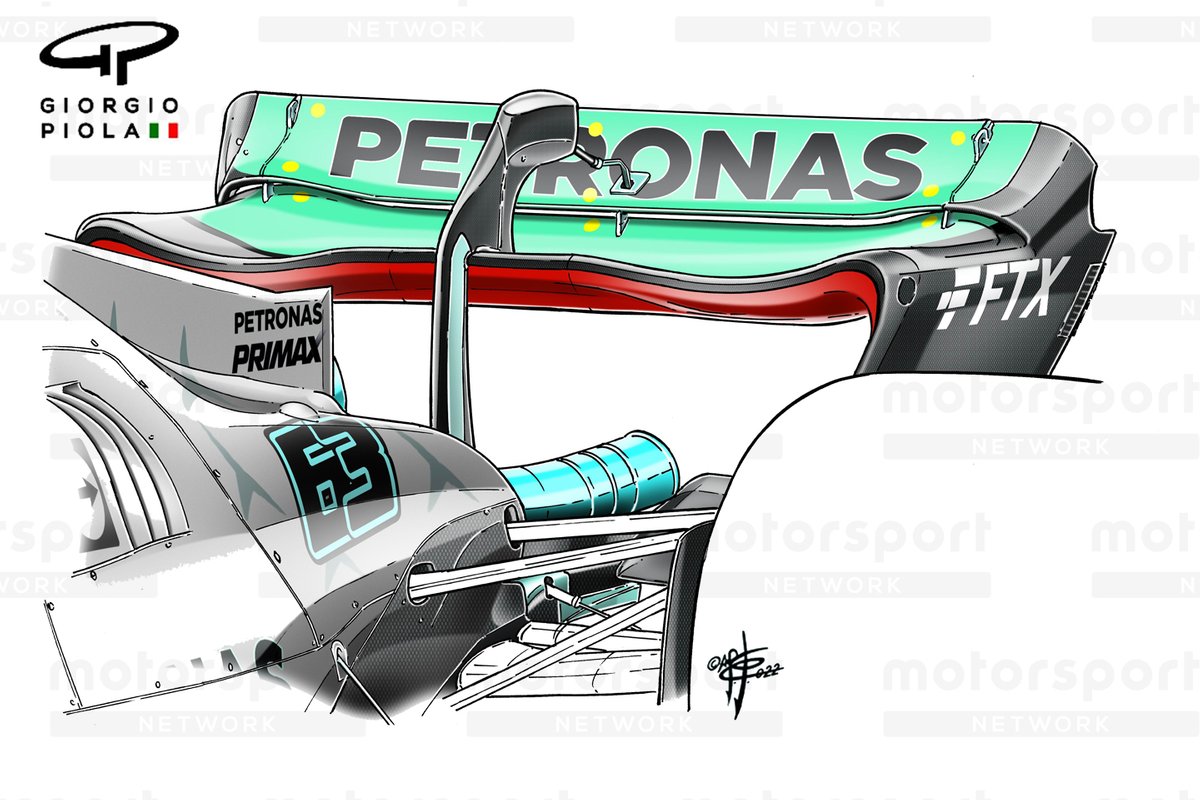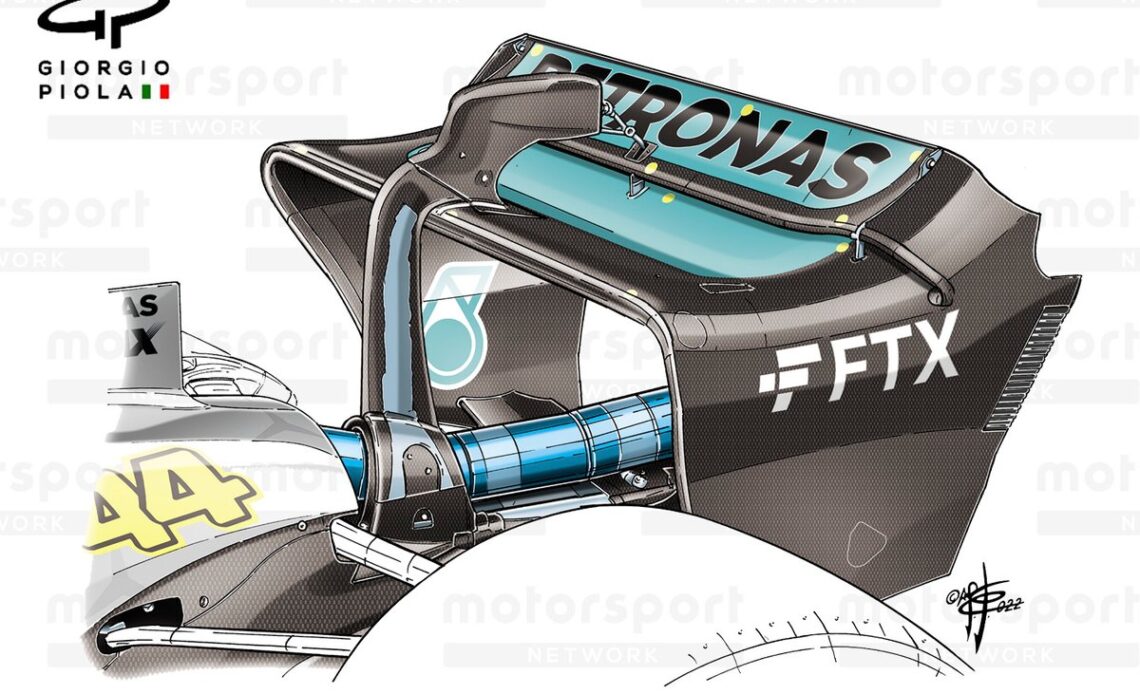However, the team only had enough spares for one driver to use it, and it was given to Charles Leclerc – not through favouritism but for practical reasons.
With the Maranello squad knowing he was starting from the back anyway, and wet qualifying clearly having a high chance of incident, it was felt that it was more sensible for Leclerc to have it.
That’s because if he had gone off and damaged it in qualifying, then a forced change of spec for the race would only have shuffled him across to start from the pitlane rather than the back row.
The risk of teammate Carlos Sainz dropping from the front to the pitlane was too much of a gamble to take as it would have both Ferraris right at the back of the field.
This new lower downforce/drag configuration will be at both drivers’ disposal for the British Grand Prix, and features revisions to both upper elements and the beam wing in an effort to help improve overall efficiency.
It’s also clear that the new wing is less loaded in the central portion and provides a straightline speed boost at the expense of some cornering performance.
The higher downforce option, sported by Sainz, has the opposite effect, which resulted in the Spaniard being able to protect his tyres more easily during each stint but meant he was down on top speed performance relative to his teammate.
The speed trap figures back this up, with Leclerc topping the charts at 342.7km/h in the speed trap, whilst Sainz was only able to achieve 331.3km/h. Meanwhile, over the finish line Leclerc topped the chart at 300.6km/h, whilst Sainz was down at 294km/h.
The extra speed on offer with the new wing could have played a critical part in the final battle between Sainz and Verstappen for the race win, but it’s hard to know for sure if it would have been enough to change the result of the race.
Ferrari was not the only team splitting set-ups between its drivers, as at Mercedes its drivers had alternative aero settings for qualifying.
Hamilton, with the lower downforce rear wing was able to reach 331.1km/h and 293.0km/h in the speed trap and across the finish line respectively, whereas Russell was bottom of the charts with his high downforce arrangement, settling for 307.6km/h (although this was probably influenced by lack of DRS) and 283.8km/h.

Mercedes also tested out changes to the W13 on Friday in its quest to dampen the ill effects of porpoising that’s blighted its season so far. This followed the issuance of a new technical…
Click Here to Read the Full Original Article at Motorsport.com – Formula 1 – Stories…

